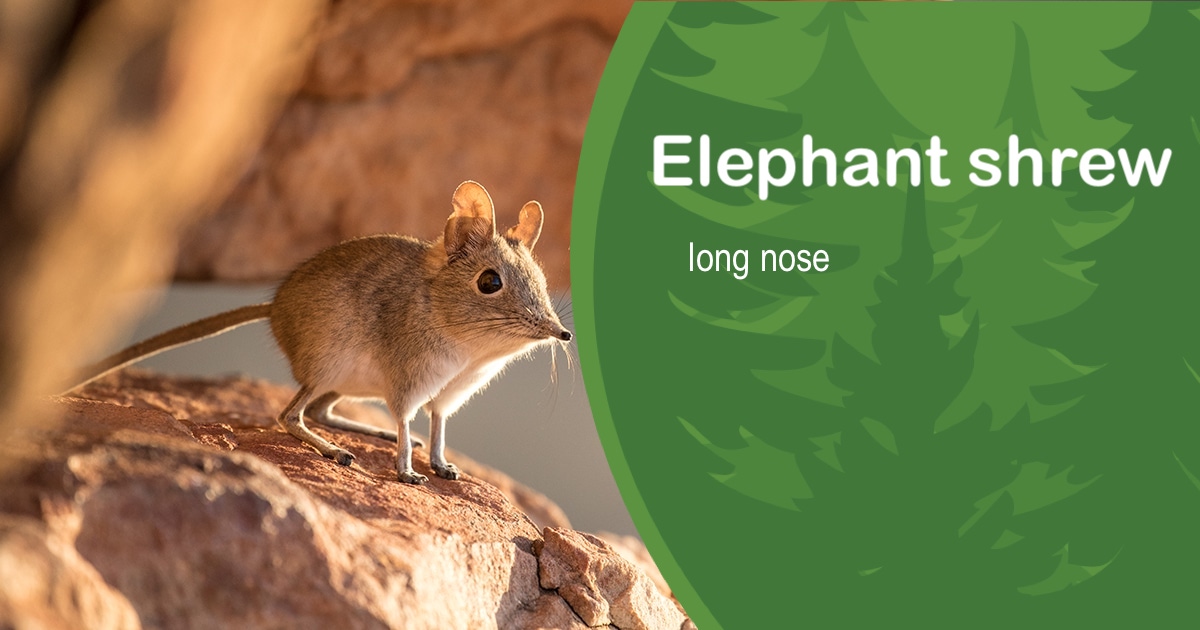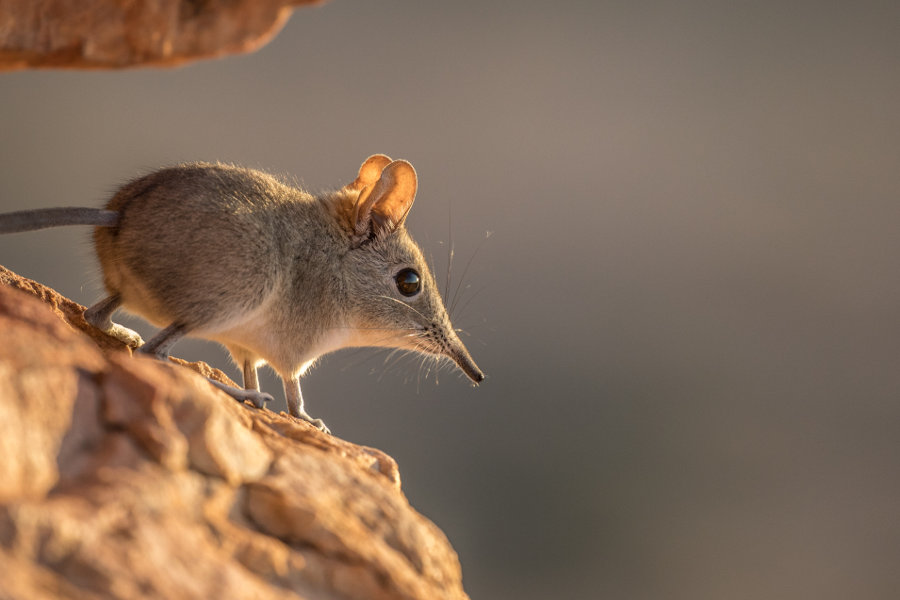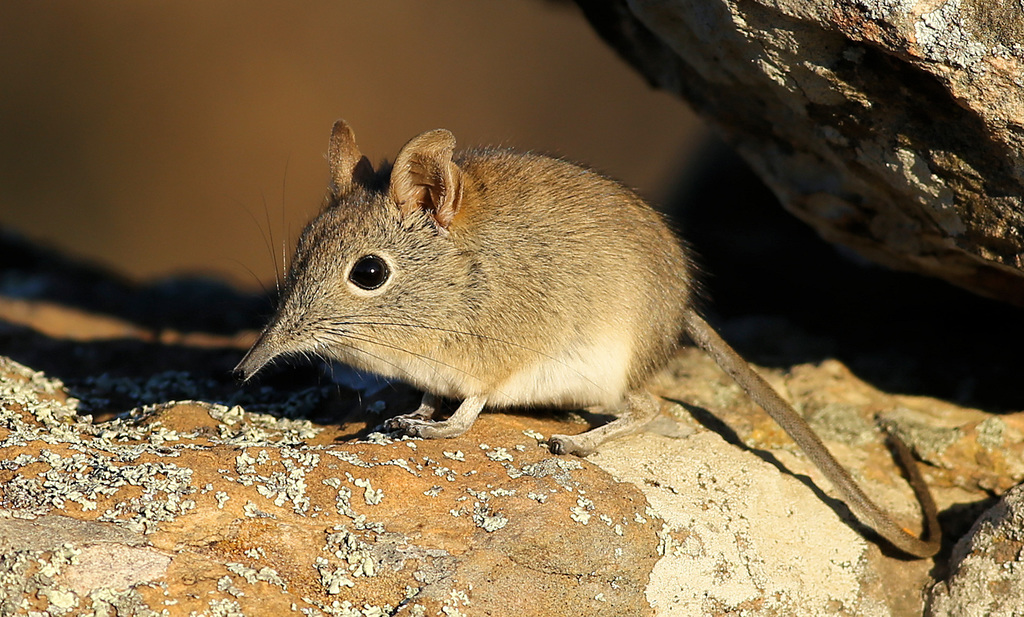





 Elephant shrews are not particularly common anywhere but can be found in a wide range of habitats. These include deserts, semi-arid mountains, rocky outcrops, and thick forests |
 Elephant shrews mainly eat invertebrates, including earthworms, spiders, insects, centipedes, and millipedes. Some species also eat green plant matter, seeds, and small fruits. |

|
Elephant shrews, unlike most small mammals, are diurnal (active during daylight), or crepuscular (some activity during both daylight and night-time), which means they are usually very well camouflaged, often wary, and have well-developed senses and escape behaviors. Several species make interconnecting pathways through the undergrowth in their territories. They use these either as high-speed escape routes, or patrol them when hunting for invertebrate food.
They have been recorded to run at speeds of 18 mph (29 km/h), When running, they make leaps of over 3 feet (1 meter), Many species foot-drum or tail-slap the earth if approached by a predator
They have scent glands at the base of the tail, in the genital and anal regions, on the soles of the feet, the chest, behind the ears, and the corners of the mouth